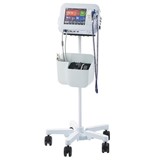Referral letters can also assist GPs during medico-legal proceedings by providing a historical record. An accurate referral letter can provide open communication and assistance in diagnosis.
Ensure your referral letters are ticking all the right boxes with these six important features to remember.
Make it timely
Consider timely receipt of your referral letter, either prior to or at the time of your patient's appointment. It pays not to rely on your patient to bring the referral letter to their appointment.
If electronic transfer of information is used, ensure it is secure and password protected for the recipient. Unless your patient has provided informed consent, referral letters forwarded by email may need to be encrypted to avoid a breach of patient confidentiality.
RACGP general practices standards for information security of patient information
Informative content

Content is the most valuable aspect of a referral letter, yet is often the least informative. Studies have found specialists consider a patient's medical history the most important aspect of referral letters however this was least likely to be included. Include content such as explanation for referral, current medications, social history, allergies, clinical findings, test results, and details of prior treatment.
Read more from the RACGP standards of referral documents for general practices
Accurate patient identification
Correct identification of patients on the referral letter ensures the right patient receives the right treatment. Items to include can be your patient's name, address, date of birth, gender and patient record number (where it exists). Unique patient identifiers can facilitate accurate and secure transfer of patient health information.
Clear structure
If you send referral letters regularly, you may consider a content template and format prompt sheet. Not only can this save time, it can also help to guide and structure your content improving readability, giving the treating doctor a clear background. Consider the use of headings that allow the recipient to easily identify select information.
Legible handwriting or typed

Unfortunately doctors can be notorious for their bad handwriting. A recent study found doctors preferred structured, computer-generated letters to unstructured, dictated letters. The number of typed referrals has improved with most doctors preferring not to handwrite letters to improve legibility. Medicare requires that all referral letters are signed and dated by the referring practitioner along with their provider number.
Read more from the Australian Medical Association (AMA) Medicare requirements for referrals
Keep copies of referrals
After your referral letter has been typed and sent, keep copies for your patient file, your patient and for referral. Keeping your files up-to-date can assist with ongoing patient management.
















-160x160-state_article-rel-cat.png)


